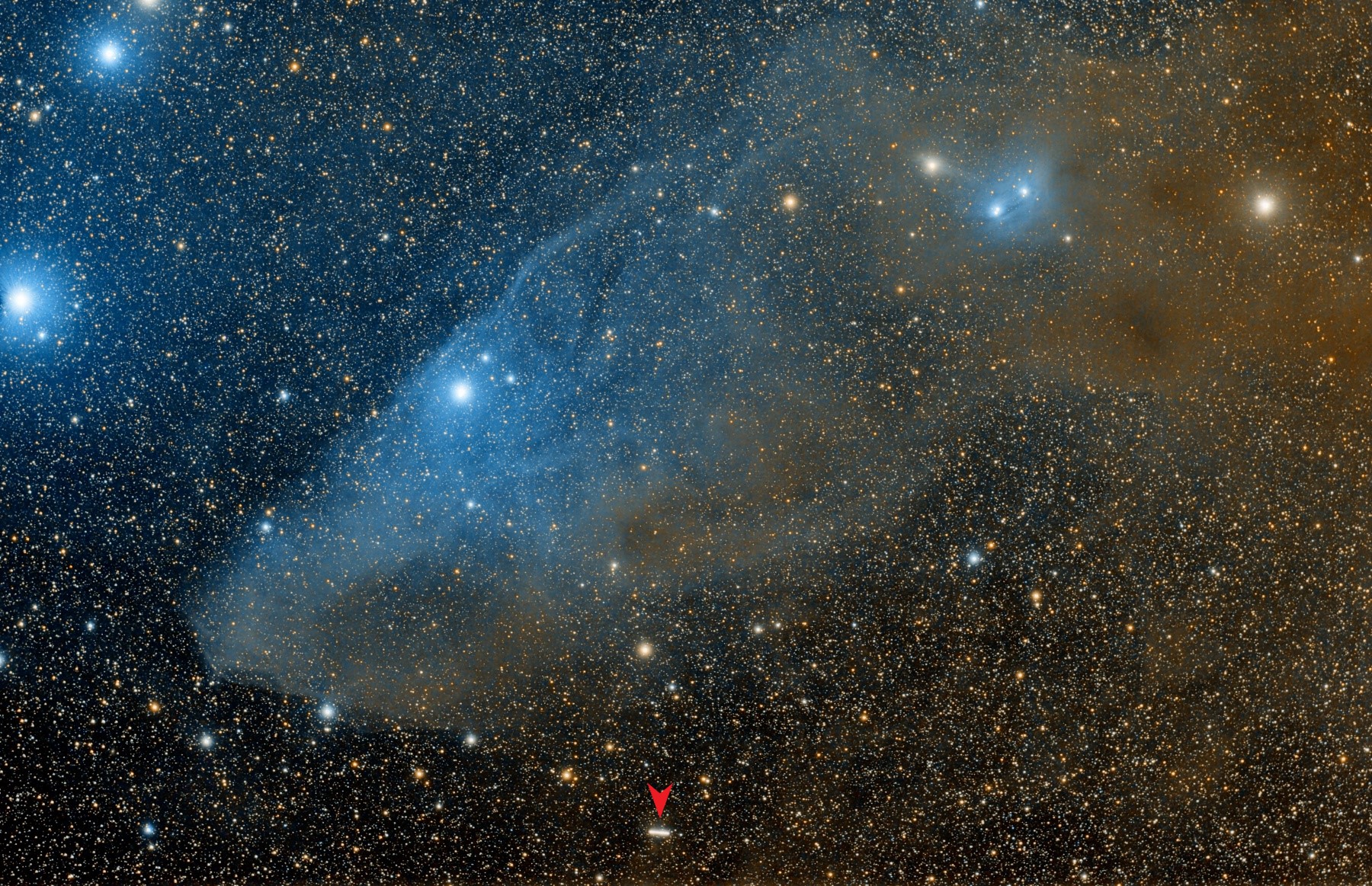The dwarf planet and the nebula.
 Click on image for full size version
Click on image for full size version
Four hundred years takes the light of the star Nu Scorpii to reach us, reflected in this blue nebula, a beautiful landscape in the Scorpius constellation. Closer to us, about 30 light-minutes away, the dwarf planet Ceres orbits in-between the planets Mars and Jupiter, the first asteroid we met on January 1, 1801, inaugurating the nineteenth century, that time of great discoveries. In this image they both share scene: the "faraway" nebula and the "near" asteroid that appears here as a white line at bottom-center of the frame, showing its orbital movement during the 7 hours that the exposure lasts (“slow” travel at speed of 18 km/seg that can be seen in the video). This photography was taken in La Banderita observatory, La Pampa, Argentina with a total integration time of 5 hours 35 min. The used equipment setup: Astrotech 65 mm F6.5 APO refractor, unmodified Canon 6D camera, Sky Watcher Star Adventurer mount (modified for DEC guiding) and homemade anti-dew system.
Technical data
| Acquisition site | La Banderita Observatory , La Pampa, Argentina |
| Acquisition dates | 06-06-2019 |
| Instrument | Astrotech 65 mm F6.5 APO Refractor. |
| Mount | Sky-Watcher Star Adventurer, (modified: DEC Guiding capable) |
| Guide | QHY Miniguider, with QHY5L-II-M camera (RA and DEC guiding) |
| Camera | Canon 6D (Unmodified) |
| Camera sensor temperature | 14°C approx.(as reported by camera - non refrigerated) |
| Integration | 67 subframes @ ISO 1600, 300 seconds each (total integration time: 5 hours 35 minutes) |
| Calibration | 49 flats, 100 bias, 35 darks. |
| Resolution | 3.19 arcsec/pixel 420 mm focal lenght, 6.5 um x 6.5 um pixels |
| Native size | 5496 x 3670 pixels |
| Cropped size | 5458 x 3525 pixels |
| FOV | 4°50’ x 3° 7' |
| Image center coordinates | RA 16h 15m Dec -19° 12' Rotación: 178° |
| Acquisition | Maxim DL |
| Process | PixInsight 1.8 |